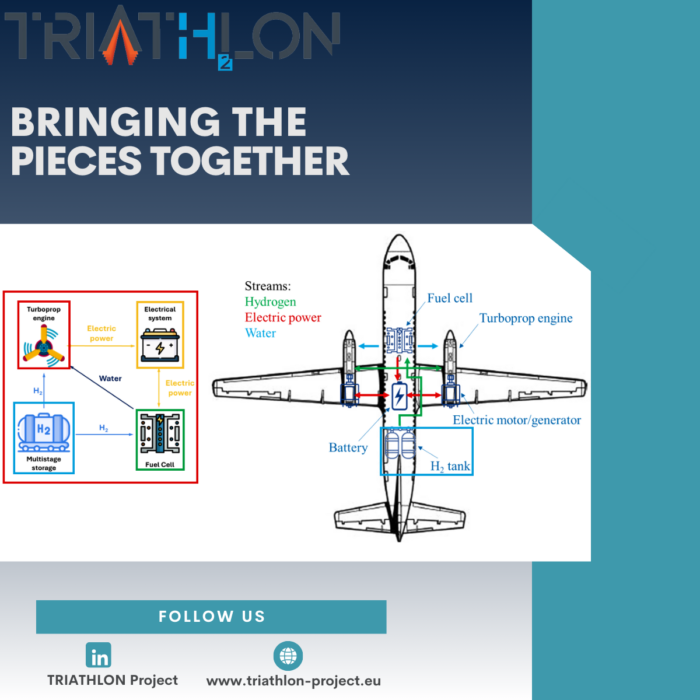After sharing updates on WP1, WP2, and WP3, we have now reached an important milestone—WP4, the phase where all our efforts converge to shape the future of hydrogen-powered aviation.
In this phase, we are developing a comprehensive 1D model of the entire powertrain, from the hydrogen storage tanks, to the fuel cells and gas turbines. This model will undergo testing within a transient virtual flight cycle, allowing us to evaluate its performance and identify potential design bottlenecks.
Our ultimate goal? To create a technology portfolio and roadmap that will guide the TRIATHLON concept toward service entry.
What we have achieved so far was to lay the groundwork for the WP4 objectives. Sabanci University (SAB) has begun to review the state-of-the-art and future trends in hydrogen flow control, providing a solid foundation for the powertrain design. Ergon Research (ERG) has initiated the assessment of potential powertrain configurations, identifying necessary inputs from other work packages. This process is crucial for aligning all elementsof the powertrain model and ensuring a cohesive system design.
As we move forward, we will focus on several key activities. SAB will continue its in-depth review of flow conditioning components, while ERG will refine the overall powertrain layout and work closely with the consortium and Advisory Board members to finalise the virtual flight cycle.
Stay tuned for more updates as we drive innovation to make hydrogen-powered aviation a reality.

